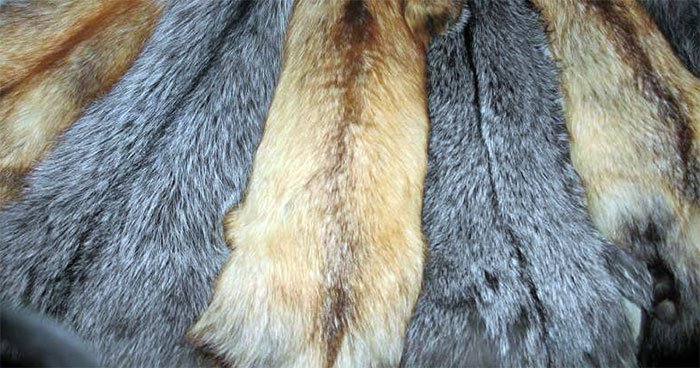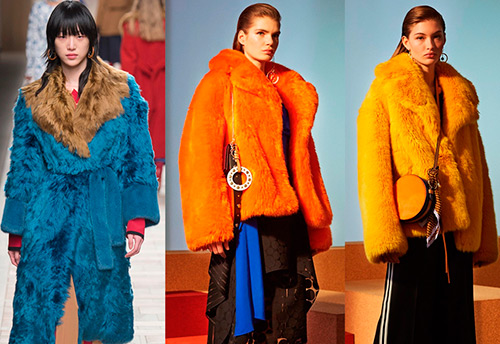Materials Science
Quality and durability of fur from sable to rabbit
Speaking of fur, we can safely say that it will never go out of fashion. Fur is not only present in all the world's fashion weeks, it pervades everywhere. These are not only fur coats on the floor, these are all kinds of capes and trimmings.
Choosing a fur coat, coat, vest, cape, you probably think not only about fashion and beauty, but also about how long you will have to wear it, and how warm it will be in it. After all, our country is northern, there are many cold days. But do not be upset that you do not live in Cuba or Thailand. The beauty of the North is no less attractive and makes it possible to transform into snow queens, and snow maidens, and into Russian beauties.

And so everything about the fur. Which are the best and warmest ones?
The richest fur and fur base is in Russia. On the vast territory of our country there are more than 100 species of fur animals and animals. By the way, skins obtained from animals that are hunted or bred in animal farms are called fur (furs), and skins obtained from domestic and farm animals are called fur skins.
All fur skins are divided into two types - winter and spring. Winter skins are the skins of animals that have the best fur in winter and do not hibernate in winter. These are skins of mink, squirrel, fox, marten, sable, hare, etc. This species also includes animals whose hair is better in winter - a rabbit, a dog, a cat. Spring species - skins of animals that hibernate and have the best skins in spring, summer and autumn, except for the time of molting. This is a marmot, gopher, muskrat, nutria, etc. The spring types include the skins of domestic animals: sheep, goats, calves, deer, etc. When harvesting the skins, one should take into account the molting time of the animal.
Skins and fur, which animals and animals are considered the best? There is no definite answer. Someone likes the sparkling shine of a sable, someone a warm, solid sheepskin sheepskin coat, and someone a beautiful silver fox. But still. The quality of the fur of animals and animals depends on many factors: on the geographical habitat, on seasonal and age variability, on the conditions of keeping the animal, and it is also known that in different parts of the skin of an animal or animal, the density of the hair is not the same, etc.
The quality of fur is assessed not only by its beauty - density, softness, silkiness, color, shine, but also by its wear resistance and heat-shielding properties. How much fur can steadily retain its properties under various physicochemical and mechanical influences, what are its heat-shielding properties - these are the questions we are always worried about when buying a product. Wear resistance and heat-shielding properties depend on many factors, from the structure of the hairline to the time of preparation of the skin.
Based on experimental and laboratory observations, the following wear resistance of furs (in percent) was established.

Beaver Kamchatsky 100
Otter 100
Wolverine 100
Sea cat 90
River beaver 90
Sable 80
Mink 70
Belek 70
Arctic fox 65
Foal 64
Karakul 60
Marten 60
Seal 55
Fox 50
Muskrat 45
Korsak 45
Lynx 40
Weasel dark 35
Squirrel 30
Groundhog 27
Columns 25
Stoat 25
Sandstone Gopher 22
Cat 17
Rabbit 12
Mole and gopher 10
Chipmunk 8
Hamster 6
Hare 5

As you can see, there are not all 100 or more species of animals and animals that live on the territory of Russia. But according to this table, you can navigate about the wear resistance of those furs and skins that interest you. For example, this list does not mention sheepskin.
Sheepskin - this is the fur from an adult animal. Naturally, it is rougher, but less beautiful than broadtail. Which one is more durable? Sheepskin, of course. Which one is more expensive? - Karakulcha. Because it is very beautiful and in demand. And not only this is the whole point.But while we are talking about wear resistance, and all other questions about karakul are a different matter. This is how you can use this table for the wear resistance of fur and skins.
Now the heat-shielding properties of fur
The heat-shielding properties of furs and skins depend on the height, density and elasticity of the hairline. This is what we can identify visually or by hand by touch. There is one more important property that is more difficult to define. This is the stability of the layer of air trapped in the hairline. If the fur is elastic, the air trapped in the hairline is immobile. This determines the good heat-shielding properties.
When we wear our favorite fur coat for a long time, year after year, the height of the fur decreases, it shrinks, and the fur coat does not warm up as much as it used to. Its heat-shielding properties decrease as the thickness of the air layer decreases. Fur products made with the leather side outward heat better, but the fur side is worse. So our Russian sheepskin coats, fur coats and ohabni were sewn with fur inside. It's much warmer. At the same time, furs were often used: squirrels, hares, foxes, martens, sables, beavers, ermine.

And in the old manuscripts there is some kind of guard fur - a guard coat. What kind of beast is this - a gatehouse? You guessed it. This is a dog. Certainly not a princely and not a royal business - to wear a watchdog fur coat. It was worn by common people, and it warmed up no worse than a sable. Decorated the leather side, that is, the top of the fur coat, with fabric - velvet, satin, taffeta, brocade, cloth, and in addition with lace, stripes, pearls and other Russian embroidery.
According to research by scientists on the heat-shielding properties of fur, it is possible to give the order of the fur and skins depending on the thermal resistance at an air flow rate of 5 m / s. The list of furs and skins is directed in descending order of heat-shielding properties.
Arctic fox blue
Reindeer
Red fox
Hare
Sheared sheepskin
Sable
Long-haired rabbit
Yakut squirrel
Sea cat
Belek
Muskrat
Plucked rabbit
Coarse lily
Goat
Small curl lily
Sheared rabbit
Mole
Artificial Karakul

Now that you know so much about furs, consider that you are more interested in warmth, durability, or beauty. If you are a girl who does not like to wear the same thing for years, then there is no point in spending money on an expensive fur coat, which you will still change next year. Here, according to these tables, you can choose so that it is both beautiful and inexpensive, but warm. And from expensive furs, you can buy a collar or a scarf, for example, from sable or mink fur, or maybe some fluffy details. For example, a fur bolero, capes, scarves, cuffs, muffs, boas, stoles, which are perfectly combined not only with a coat, but also with a classic sheath dress, with a floor-length evening dress, a cardigan and even a turtleneck.

Tell friends:
Comments and Reviews
Add a comment
Rating news
Shades of clothing that make women look younger
What shades of hair make women younger: rules and photos
Funny wedding dresses - photos and ideas
12 most expensive down jackets for the winter
How to look 25 at 40: tips from supermodels
Beautiful schoolgirls
Anti-aging haircuts and hairstyles for women
Fashionable skirts for autumn and winter
Fashionable women's trousers for the cold season
Fashionable and stylish sandals for summer 2020
Spring-summer 2021
 Fashionable dresses and tops with thin spaghetti straps
Fashionable dresses and tops with thin spaghetti straps
 Bandana tops: how to wear stylishly and beautifully
Bandana tops: how to wear stylishly and beautifully
 How to put together the perfect men's wardrobe for the summer
How to put together the perfect men's wardrobe for the summer
 Fashionable shorts for spring-summer 2021
Fashionable shorts for spring-summer 2021
 Fashionable skirts for spring-summer 2021: a guide to online shopping
Fashionable skirts for spring-summer 2021: a guide to online shopping
 The most fashionable dresses spring-summer 2021: styles and colors
The most fashionable dresses spring-summer 2021: styles and colors
 Fashionable total look 2021: ideas of images and trends
Fashionable total look 2021: ideas of images and trends







